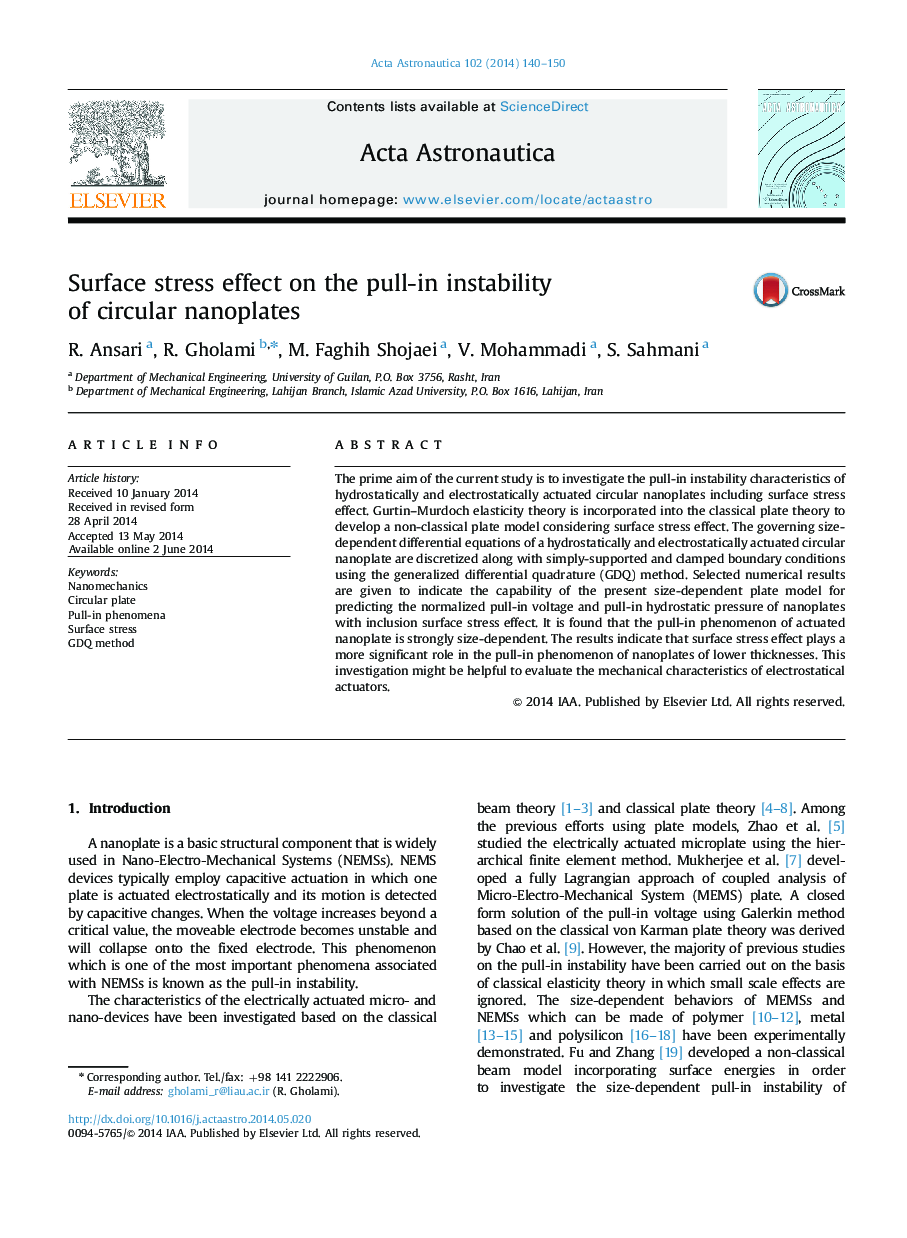| Article ID | Journal | Published Year | Pages | File Type |
|---|---|---|---|---|
| 1714593 | Acta Astronautica | 2014 | 11 Pages |
•Development of a non-classical circular nanoplate model including surface stress effects.•Prediction of pull-in voltage and pull-in hydrostatic pressure for circular nanoplates with arbitrary edge supports.•Exploring the influence of nanoplate thickness, surface elastic modulus and residual surface stress on the pull in.•Comparing the classical and non-classical theories in predicting the pull-in voltage and hydrostatic pressure.
The prime aim of the current study is to investigate the pull-in instability characteristics of hydrostatically and electrostatically actuated circular nanoplates including surface stress effect. Gurtin–Murdoch elasticity theory is incorporated into the classical plate theory to develop a non-classical plate model considering surface stress effect. The governing size-dependent differential equations of a hydrostatically and electrostatically actuated circular nanoplate are discretized along with simply-supported and clamped boundary conditions using the generalized differential quadrature (GDQ) method. Selected numerical results are given to indicate the capability of the present size-dependent plate model for predicting the normalized pull-in voltage and pull-in hydrostatic pressure of nanoplates with inclusion surface stress effect. It is found that the pull-in phenomenon of actuated nanoplate is strongly size-dependent. The results indicate that surface stress effect plays a more significant role in the pull-in phenomenon of nanoplates of lower thicknesses. This investigation might be helpful to evaluate the mechanical characteristics of electrostatical actuators.
